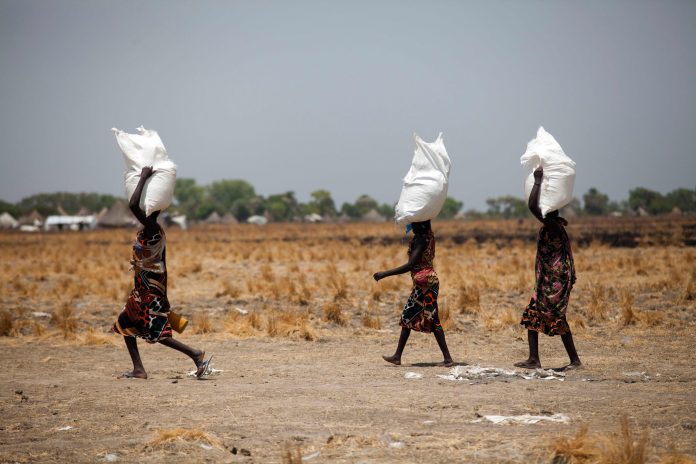(THIS ARTICLE IS MACHINE TRANSLATED by Google from Norwegian)
By Ola Eian and Anna Kvam
In February, the UN declared famine in South Sudan. This is the first time in six years that the UN has used this term. The famine acutely affects around 100 people, while a whole million are at risk of being affected by the same disaster. The reason is complex. There is no doubt that the political situation in South Sudan has contributed to triggering the disaster, as several media outlets have reported. The security situation in the conflict-affected country makes it difficult and, in the worst case, impossible for aid organizations to come up with preventive and emergency aid. While political actors must be blamed for the famine, they cannot be blamed for the drought itself that is now affecting all of East Africa. The world's industrialized countries must take some of the blame for it. For there is no doubt that global temperature rise is part of the causal picture.
Missing concepts. In such a situation, neither disclaimer, resignation, apathy nor guilt should be our – the industrialized countries' answer. In addition to helping with money for emergency relief, we should raise our eyes and take seriously the climate-related hunger and refugee disasters that may hit in the coming decades. At worst, by the end of the century we are facing a scenario of 200 million climate refugees. In comparison, today there are around 63 million people in total escape.
For the sake of order, it should be put in that the concept of climate refuge is in fact imprecise. At present, people who leave their homes for climate-related reasons are not considered refugees. In UN statistics, climate refugees end up either as "internally displaced" or as "economic migrants" if they cross a national border. It should be obvious that people on climate flight fall between many chairs in the international regulations for migrants. We don't even have a conceptual device for them. Despite this, their situation should be taken very seriously, especially by us in the West. Not just because we carry the historical responsibility for a potential scenario with 200 million people on the run. But also because this greatly affects our part of the world, and the country we live in – in the part of the world that is shielded by some of the most dramatic consequences of climate change due to geographical flux. How should we deal with this? We should fight climate change, make money and expertise available for climate adaptation and climate change mitigation in the global south.
Adapting to climate change. Exactly how we do the former – going to the fight against climate change – is fortunately a debate high on the agenda in Norway. What is reasonable and unreasonable emissions cuts, and effective and inefficient climate measures, are part of our public policy change. Hopefully, it also culminates in action that contributes to real emissions cuts at home. When it comes to climate change, this is a topic that is under-communicated both locally and globally. It is a pity. Without the population putting those who manage Norwegian aid funds on an ongoing basis, it will be difficult to analyze whether the aid policy builds up under good climate adaptation measures and programs.
As long as climate flight is not a topic on the political agenda, we risk being completely taken to bed.
Be prepared. Last, but not least, the discussion of what kind of framework should apply to climate refugees is far behind. Yes, we can hardly remember having heard a parliamentary politician think how the world community and international law should meet people fleeing because land is swallowed by the sea, taken off the desert or can no longer be cultivated because of unstable growing seasons. Our concern is not to claim that giving people in this situation a legal status as a refugee will solve all problems. Rather, we would like to point out that as long as climate flight is not a topic on the political agenda, neither in Norway nor the EU, we risk being completely taken to bed. Let there be little doubt that, in the worst-case scenario, the climate flight scenario talks about conditions of a completely different magnitude than what we see around the Mediterranean coast today. We should not pose unprepared.
anna.kvam@gronnungdom.no
hello.eian@gronnungdom.no


